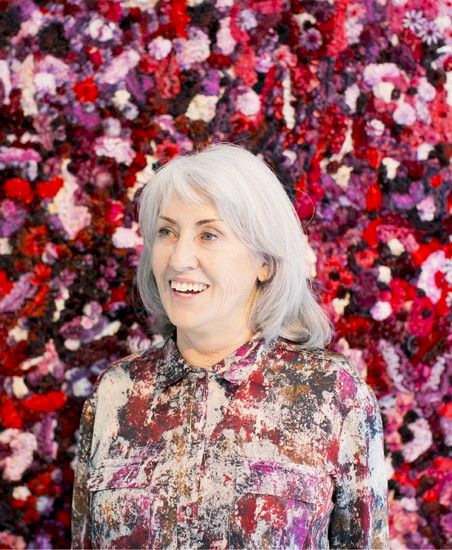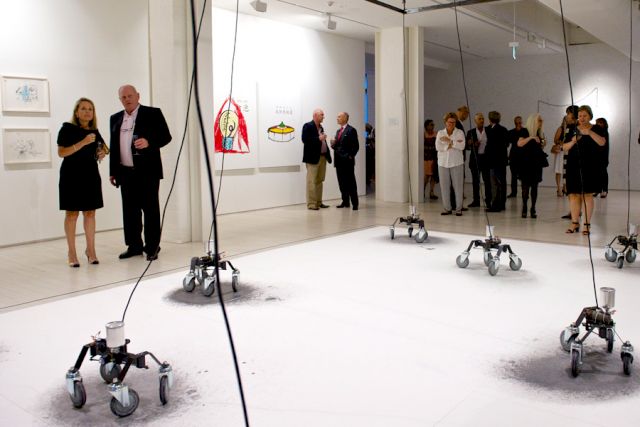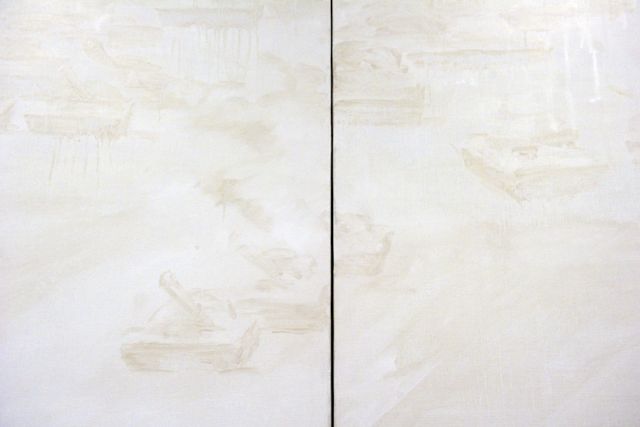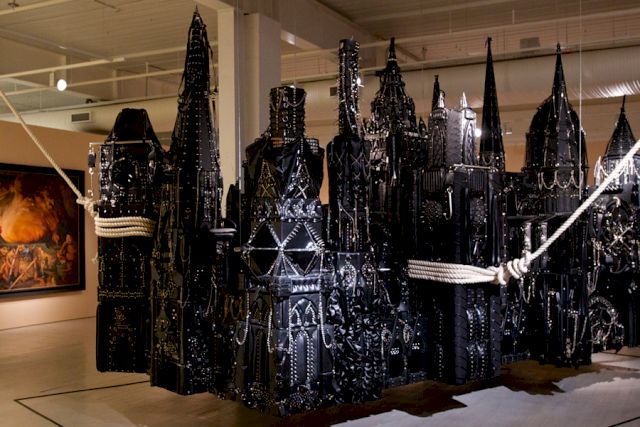BMW Art Guide by Independent Collectors
White Rabbit Collection
Chinese Contemporary Art – Australia, Sydney

White Rabbit Gallery sits on the border of old and new Sydney. On one side of the gallery is the leafy suburb of Chippendale: Victorian terrace houses, iron lace, and bars on the windows. On the other is Central Park, a gleaming high-rise development on the former site of a 168-year-old brewery. The gallery itself sits in a glass-fronted conversion of a Rolls-Royce service depot. It is the public exhibition space for Judith and Kerr Neilson’s collection of contemporary art by more than 200 Chinese artists.
On a Thursday morning the gallery is full and humming with conversation.


The gallery has made distinctive choices about how to show the collection. Two walls that reach from the ground floor to the ceiling of the fourth floor are covered with paintings, only centimeters of space between their frames. This is such an unexpected way to look at paintings but feels powerful and fresh. It is not possible to look at one painting without the edges of others encroaching on your field of vision. Seeing the paintings in this way takes the focus away from the artists, and puts it onto the artistic expression of a cultural moment.
On the upper floors, each artwork has a label that gives more detail about it, as in a conventional gallery. Unlike in a conventional gallery, the text on the labels is almost entirely descriptive. The labels sit far off to the side of the work, or around a corner. I find myself spending time with each work before I read anything about it.
Zhou Zixi’s “Dawn–Light Fog“ depicts an infamous scene of the student protest at Tiananmen Square, painted over in white, as though viewed through a fog. The label reads: “Zhou Zixi fears that if events like the June 1989 protests and massacre in Tiananmen Square are not constantly revisited, time and censorship will quietly erase them.“ Looking at the painting mirrors the way the artist says we look at the past, but forces us also to look in a new way: closely and with careful attention.

Throughout the gallery, guides are dressed in brightly colored aprons. They strike up conversations with visitors, share ideas about the work.
I ask Peter Mintah-Owusu, the security guard, about his favorite work. “Imitating Travelers Among Mountains and Streams by Fan Kuan“ is Chen Chun-Hao’s response to an iconic 1000-year-old painting. From a distance I see a canvas of very delicate brushstrokes, but as Peter walks me over I notice something unbelievable: the lines are composed of thousands of tiny nails. “It’s wonderful,“ Peter says, “it’s just too fine.“
Peter points up to a painting on the gallery wall and asks me what I see. It is “The Occasion No. 1“ by He Gong. Dark and fuzzy, the painting could be of nothing or anything. I look closely for a moment and now I see an oncoming train, human figures on the tracks in front of it. I describe this to Peter and he agrees. He sees the painting as a critique of the Chinese government: “But if I were a Chinese politician, what would I say?“

Making art, says Peter, “is ideal for sending out a message to the world that the government can’t block. The meaning is blurred.“
It could be a train, it could be a regime: it could be nothing.
Melbourne-based Lara Week is a designer for theatre and dance, and associate producer for international arts lab Tribal Soul.
Photos by © White Rabbit Gallery
More Information on White Rabbit Gallery